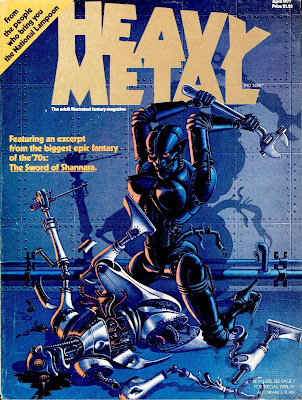Book Review: 'Killerbowl' by Gary K. Wolfe
5 / 5 Stars
‘Killerbowl’ (162 pp) was published by Doubleday in hardback in September 1975; the cover art is by Steve Marcesi.
[A mass market paperback version was published in 1976 in the UK by Sphere Books.]

Author Gary K. Wolf (not to be confused with sf essayist Gary K. Wolfe) wrote several sf novels in the 1970s. His 1981 novel ‘Who Censored Roger Rabbit ?’ was the basis of the hit 1988 film Who Framed Roger Rabbit ?
Blogging about sf and fantasy books published during the interval from 1968 – 1988 occasionally allows me to discover an overlooked, rare gem of a title, and ‘Killerbowl’ is one of these.
Although ‘Killerbowl’ came out the same year as the movie Rollerball, which also examined a near-future USA in which blood sport was a carefully crafted corporate tool for ensuring a compliant populace, ‘Killerbowl’ is not a derivation, but rather, a more satirical treatment of the themes of American sports, its superstars, TV coverage, and the viewing habits of ‘Joe Six Pack’.
As ‘Killerbowl’ opens, its New Year’s Day, 2010, and within an eight-block area of downtown Boston, the Street Football League’s Super Bowl XXI is about to begin.
The city center has been temporarily evacuated, save for the two, 13-man teams of the San Francisco Prospectors and the New England Minutemen, the referees, and a small army of cameramen.
For the next 24 hours, the two teams will battle through the falling snow and freezing temperatures for the Championship of the SFL (the descendent of the NFL). In the SFL, violence is not only an expected part of the game, it’s encouraged. The act of tackling an opposing player includes the use of long-bladed knives and blackjacks, and if a player is killed, there are no substitutions.
The populace watching Super Bowl XXI has been beaten down by decades of the Energy Crisis and attendant economic dislocation that started in the early 70s. With little hope for the future, the citizenry are content to consume bread and circuses, in the form of the SFL, handed out by the corporations and their political allies. With over 90% of the population of the USA tuning in to Super Bowl XXI, it’s an unprecedented display of the International Broadcasting Company’s dominance of American social and political life.
For aging veteran T. K. Mann, quarterback for the Prospectors, Super Bowl XXI is personal. His Minutemen counterpart, the arrogant, self-centered, sadistic Harv Matision, has risen to stardom based on publicly humiliating Mann and murdering Prospector players. For Mann, it’s less about winning the game and more about exacting revenge on Matision.
But the IBC wants the highest rating possible, and to that end, the entire season has been rigged in favor of Matision and the Minutemen. Things aren’t going to change just for the Super Bowl, either. For the IPC wants Matision and the Minutemen to win the game….and kill T. K. Mann in the process……………….
‘Killerbowl’ works very well as both a page-turning action novel and as a social satire, something that many sf novels try for, but rarely accomplish. Author Wolf uses a clear, declarative prose style – never a given for an sf novel published during the New Wave Era – to lend a documentary-like quality to the violent proceedings of the SFL season and the Super Bowl.
As well, the book is spot-on in terms of extrapolating the depressed, entropy-laden zeitgeist of the mid-70s forty years into the future: the 2010 version of the USA described in 'Killerbowl' is a very logical projection, given the state of the USA in 1975.
The major problem with ‘Killerbowl’ is that it’s long out of print, and copies in good condition are quite pricey. If you can find an affordable copy in the shelves of your used bookstore, don’t hesitate to pick this novel up !











































































